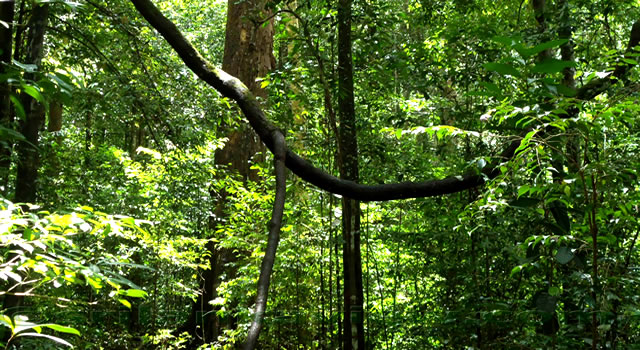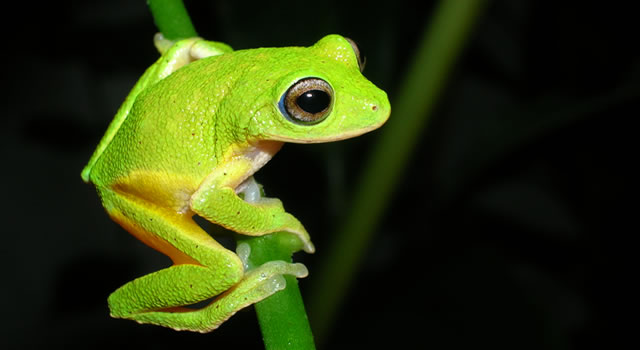The Sinharaja Forest is the last remaining primary tropical rainforest in the wet zone of Sri Lanka. Spanning over an area of 11,250 hectares of forest land, Sinharaja Forest is bounded on the north by the Napola Creek and Koskulana River, on the south and south-west by the Maha Creek and Gin River, on the west by the Kalukandawa Creek and Kudawa River and on the east by an ancient footpath near Beverley Tea Estate and by the Denuwa Mountain.
The elevation of the forest varies from 90 to 1170 meters, presenting a large diversity in plant and animal species living in the forest. This ecological importance of Sinharaja Forest has led the UNESCO to declare the forest as a World Heritage Wilderness Area, prompting the world community to preserve this wonderful gift from nature.
Sinharaja Forest is the home of more than 60% of Sri Lanka's endemic plant species and is multi-layered, which is a characteristic of a rainforest. Mesua - Shorea and Dipteracarpus varieties are prominent among the vegetation. A variety of wild orchids, epiphytes and lianas can be found within Sinharaja Forest. The highest amount of endemic animals in Sri Lanka is found in the Sinharaja Forest, including eight out of the 12 endemic mammal species of Sri Lanka. Commonly sighted animals include the giant squirrel, dusky-stripped jungle squirrel, purple-faced monkey and torque macaque.
The red-faced malkoha, green-billed caucal, blue magpie and Sri Lankan spur fowl are some of the endemic birds seen at Sinharaja Forest, which is home to over 95% of the indigenous birds of Sri Lanka.
Contributing to the high diversity of amphibians and reptiles, the forest is also the residence of the endemic green pit viper, hump-nosed lizard (Lyriocephalus scutatus) and the horned lizard (Ceratophora aspera). Even several species of fish are present in the small group of rivers and water holes within forest. The striped tasbora, walking catfish and the comb tail are seen in the waters of Sinharaja Rain Forest.




